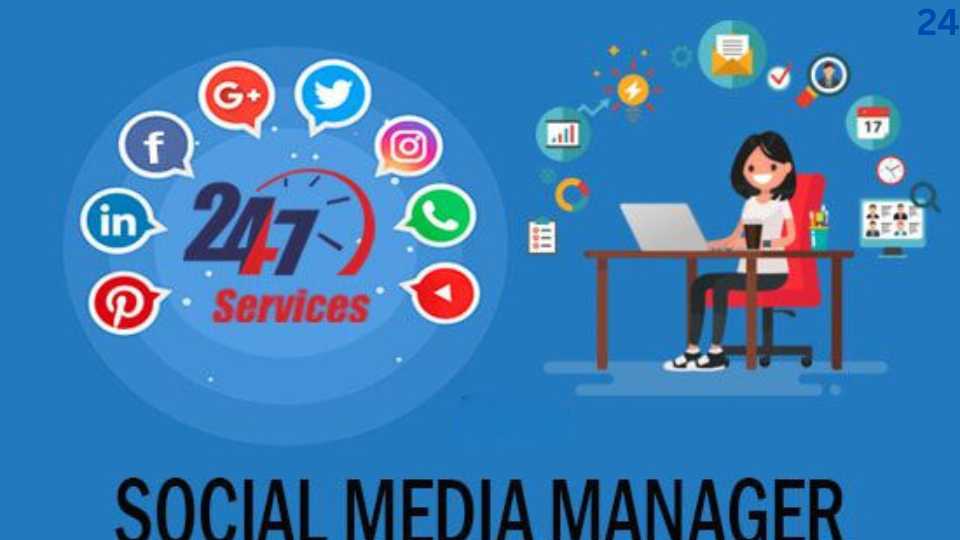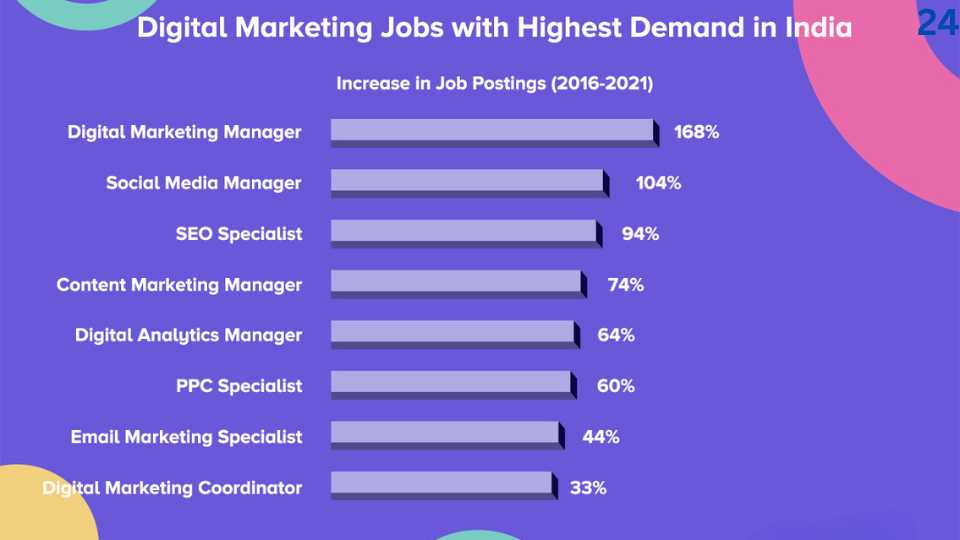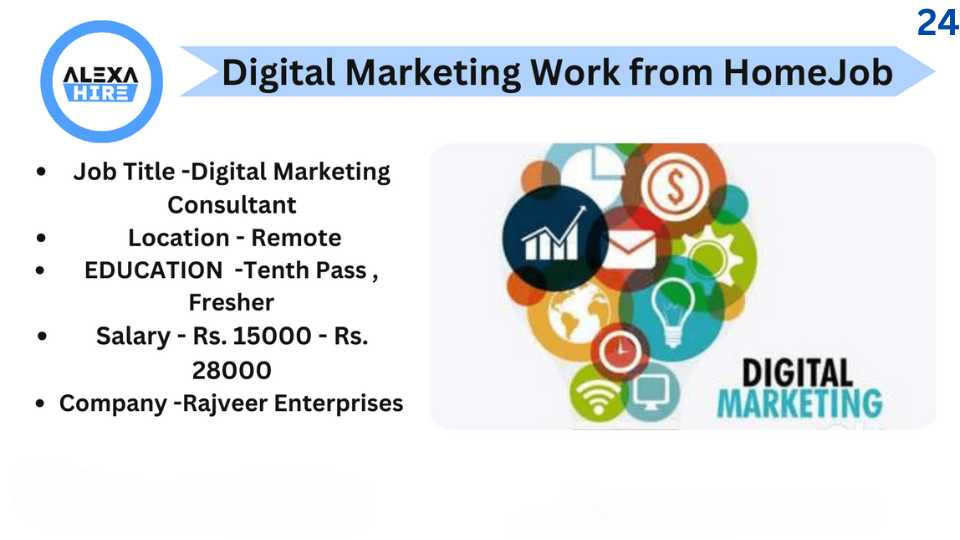The History and Evolution of Digital Marketing
The History and Evolution of Digital Marketing , The world of digital marketing has changed dramatically since its inception. From simple banner ads to complex algorithms that personalize customer experiences, it has come a long way.
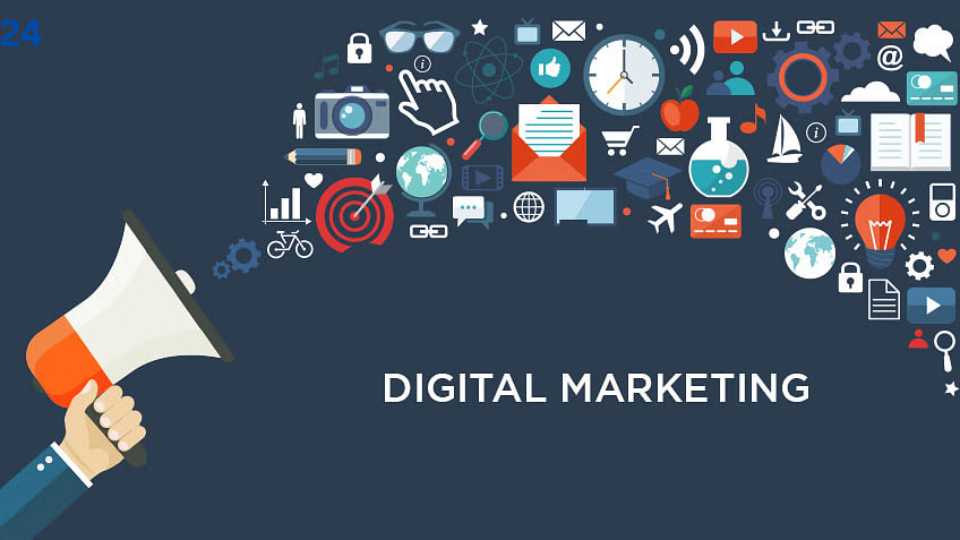
As we stand in 2024, it’s hard to imagine a time when online marketing wasn’t a primary tool for businesses. But how did we get here? What were the pivotal moments that shaped digital marketing into what it is today?
Table of Contents
In this article, we’ll explore the history and evolution of digital marketing, charting its development from the early days of the internet to the highly sophisticated strategies used by companies today.
1. The Birth of Digital Marketing: The Early 1990s
The foundation for digital marketing was laid in the early 1990s when the internet first became widely available to the public. It wasn’t until 1994, however, that the first-ever online ad appeared on the web.
More info
A company named HotWired introduced a banner ad that simply read, “Have you ever clicked your mouse right here? You will.” This was the birth of the clickable ad, which paved the way for many more digital marketing strategies.
1.1 The Rise of Search Engines
Around the same time, the internet saw the rise of search engines like Yahoo (1994) and Google (1998). These platforms provided a way for businesses to be discovered by users, leading to the first form of search engine marketing (SEM).
Businesses realized they could optimize their websites for search engines to appear higher in search results, and this became the precursor to the concept of SEO (Search Engine Optimization).
2. The Growth of Email Marketing: Late 1990s to Early 2000s
In the late 1990s, as more people gained internet access, another pivotal moment in digital marketing emerged—email marketing. Companies started collecting email addresses from customers and using them to send targeted marketing messages.
The first major email marketing campaign is often attributed to The Green Giant in 1997, which used email to reach potential customers with promotions. By the early 2000s, email marketing was a standard practice.
2.1 The Evolution of Email List Building
With the advent of tools like Aweber and Mailchimp in the early 2000s, businesses were able to manage and segment email lists with ease. This allowed for more personalized marketing, increasing the effectiveness of email campaigns. By the mid-2000s, companies were using email to send tailored offers, newsletters, and product updates, marking a significant shift in how businesses communicated with their audiences.
3. The Rise of Social Media Marketing: Mid 2000s
By the mid-2000s, social media began to rise in popularity with platforms like MySpace, Friendster, and later, Facebook (2004), Twitter (2006), and Instagram (2010). These platforms gave businesses a whole new way to engage with customers and market their products and services. Social media marketing became an essential part of this strategies.
3.1 Facebook and Twitter: Game-Changers in Digital Marketing
In 2007, Facebook introduced the Facebook Ads platform, which allowed businesses to target users based on interests, age, location, and other demographics. This was a major breakthrough. Businesses now had the ability to tailor their advertising to specific user groups, increasing the relevance and effectiveness of their ads.
Twitter also introduced its own paid advertising platform in 2010, further cementing the role of social media in digital marketing. Marketers now had the tools to create highly-targeted ad campaigns and track their performance in real-time.
4. The Shift to Mobile Marketing: 2010s
As smartphones became ubiquitous in the early 2010s, it had to evolve once again. People were spending more time on mobile devices than desktops, and marketers had to adjust their strategies accordingly.
4.1 Mobile Optimization and the Rise of App Marketing
Websites were redesigned to be mobile-friendly, and businesses began focusing on creating mobile-optimized experiences. Apps became a huge part of the marketing landscape as well, with businesses using them to engage customers directly.
For example, mobile ads became a standard feature on apps like Instagram, YouTube, and Snapchat, reaching millions of users. The emergence of location-based marketing (like Geofencing) allowed companies to send ads to customers based on their physical location, further enhancing the effectiveness of mobile campaigns.
5. The Era of Content Marketing: 2010s to Present
Content marketing, where businesses create valuable content to attract and engage customers, began gaining significant traction in the 2010s. With the rise of blogs, videos, podcasts, and infographics, businesses realized that offering useful, informative, or entertaining content could build trust with their audience.
5.1 The Power of Video Marketing
Video marketing became one of the most powerful forms of content. YouTube, which had launched in 2005, had become a go-to platform for both entertainment and education. By 2017, video ads accounted for nearly 70% of all consumer internet traffic. Brands now began using video content not just for entertainment, but also for product demonstrations, behind-the-scenes looks, and brand storytelling.
5.2 The Influence of Blogging and SEO
Blogs became an essential tool for businesses to provide valuable content while also driving traffic to their websites. Blogging combined with SEO allowed businesses to rank for relevant keywords, enhancing visibility. In turn, this generated more leads and conversions, further establishing content marketing as a cornerstone of digital marketing.
6. The Advent of Influencer Marketing: Late 2010s
Another transformative shift in digital marketing came with the rise of influencer marketing. Social media influencers with large followings became sought-after partners for brands. These influencers could shape the opinions of their audiences, and brands quickly realized the power of partnering with these individuals to promote products.
6.1 The Growth of Influencer Platforms
Influencer marketing platforms like Instagram and TikTok grew exponentially. In 2018, influencer marketing was valued at $6.5 billion, and by 2022, it was projected to reach over $16 billion. Brands started to trust influencers more than traditional forms of advertising, viewing them as authentic advocates for their products.
7. Data-Driven Marketing: 2020s and Beyond
As digital marketing strategies became more sophisticated, so did the tools used to track consumer behavior. Big data analytics and artificial intelligence (AI) allowed businesses to gather vast amounts of data on consumer preferences, habits, and interactions.
7.1 The Role of AI in Personalization
AI played a huge role in making marketing more personalized. For example, platforms like Google and Facebook now use AI to predict which ads are most likely to appeal to specific users. AI-powered tools, like chatbots, also emerged to provide customers with real-time support and assistance.
7.2 Programmatic Advertising
Programmatic advertising became more prevalent in the 2020s. Through the use of automated software, businesses could buy ads in real-time, targeting the right audience at the right time. This made ad buying more efficient, cutting down on manual processes and maximizing returns on ad spend.
8. The Future of Digital Marketing: What’s Next?
As we look to the future, digital marketing continues to evolve. The growth of virtual reality (VR), augmented reality (AR), and the metaverse promise to open new frontiers for marketers. New technologies will continue to push the boundaries of what is possible in terms of consumer engagement.
8.1 Voice Search and Smart Devices
Voice search is becoming increasingly popular with the rise of smart speakers like Amazon Alexa and Google Home. This shift could impact SEO, as marketers will need to optimize their content for voice search queries, which tend to be more conversational.
8.2 The Continued Rise of AI and Automation
AI will likely continue to transform digital marketing by making processes more automated and efficient. From generating content to optimizing ad campaigns, businesses can expect AI to handle more tasks traditionally performed by humans.
Conclusion
The histories of digital marketing is a story of constant evolution. From the humble beginnings of banner ads to the complex algorithms and AI-driven strategies we use today, digital marketing has reshaped the way businesses interact with customers.
With new technologies on the horizon, there’s no telling where digital marketing will go next, but one thing is clear: it will continue to be an essential part of how businesses thrive in the digital age.
FAQs
What was the first form of digital marketing?
The first form of digital marketing was the clickable banner ad, introduced in 1994 by HotWired.
How did social media change digital marketing?
Social media platforms like Facebook and Twitter introduced highly targeted advertising, allowing businesses to reach specific audiences based on their interests and demographics.
What is content marketing?
Content marketing involves creating valuable, relevant content to attract and engage customers, such as blogs, videos, and infographics.
What is influencer marketing?
Influencer marketing is when businesses collaborate with individuals who have a large following on social media to promote their products or services.
What does the future hold for digital marketing?
The future of digital marketing includes the rise of AI, voice search optimization, and the potential impact of virtual reality and augmented reality.
What Exactly is Digital Marketing?
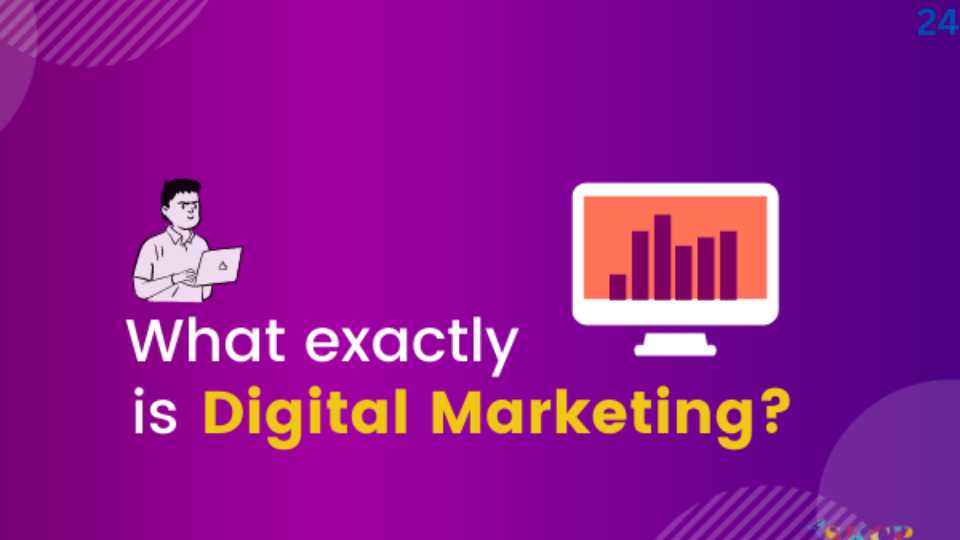
Digital marketing has become a fundamental part of any business strategy today. It allows businesses to reach their audience, build brand awareness, and grow sales in ways that traditional marketing methods can’t compete with. But what exactly is digital marketing? And why has it become so crucial for businesses of all sizes? Let’s dive in.
Introduction: What Exactly is Digital Marketing?
Digital marketing refers to any marketing efforts that use the internet or electronic devices to connect with customers. It includes a broad range of activities designed to promote products or services through digital channels like websites, social media platforms, email, search engines, and mobile apps.
In simpler terms, if you’re using the internet to market something, you’re engaging in digital marketing. As of today, digital marketing plays a crucial role in shaping business success, regardless of the industry.
The Evolution of Marketing
Traditional vs. Digital Marketing
Marketing has come a long way from traditional methods like print ads, TV commercials, and radio spots. In the early days, businesses had limited options for reaching a large audience, and marketing was often very costly and less targeted.
But with the rise of the internet, digital marketing emerged as a cost-effective alternative. Unlike traditional marketing, digital marketing allows businesses to engage with customers in real-time and measure the effectiveness of their campaigns through analytics and data.
How Digital Marketing Transformed the Business Landscape
Digital marketing has made it easier for companies to connect with their target audience on a global scale. Whether through a Facebook ad or an email campaign, businesses can now reach customers anywhere in the world with just a few clicks. This has leveled the playing field, allowing even small businesses to compete with industry giants in the digital space.
Key Components of Digital Marketing
Digital marketing encompasses a variety of techniques and strategies, each with its own unique set of benefits. Let’s break down the most important components.
Search Engine Optimization (SEO)
SEO is the practice of optimizing your website to appear higher in search engine results like Google. This helps drive organic (non-paid) traffic to your site. The higher your website ranks, the more likely it is that potential customers will find you.
Key SEO strategies include keyword research, on-page optimization (like title tags, meta descriptions, and content), and off-page tactics like building backlinks.
Pay-Per-Click Advertising (PPC)
PPC is a form of digital advertising where businesses pay a fee each time their ad is clicked. It includes search engine ads (like Google Ads) and display ads that appear on websites. With PPC, businesses can target specific audiences based on their search behavior and demographics, making it a powerful tool for generating leads.
Content Marketing
Content marketing involves creating valuable, relevant, and consistent content to attract and engage an audience. This could be in the form of blog posts, videos, infographics, podcasts, or eBooks. The goal is to build trust and authority with your audience over time.
Social Media Marketing
Social media marketing uses platforms like Facebook, Instagram, Twitter, LinkedIn, and TikTok to promote a business and engage with its audience. Social media allows businesses to interact directly with customers and share content that drives engagement and sales.
Email Marketing
Email marketing involves sending targeted emails to a group of subscribers. This could be newsletters, promotional emails, or transactional emails. Email marketing remains one of the most effective ways to nurture leads and retain customers.
Affiliate Marketing
Affiliate marketing is a performance-based strategy where businesses reward third-party partners (affiliates) for generating traffic or sales through their marketing efforts. This is often seen in influencer marketing, where influencers promote products to their followers in exchange for a commission.
Influencer Marketing
Influencer marketing involves partnering with individuals who have a large, engaged following on social media or other platforms. These influencers help promote a business’s products or services, often in an authentic, relatable way that resonates with their audience.
The Role of Technology in Digital Marketing
The Internet and Mobile Devices
The internet has made digital marketing possible. But mobile devices have transformed it. With billions of people using smartphones, businesses now have the ability to reach customers anywhere, anytime. Mobile optimization, therefore, has become a critical component of any digital marketing strategy.
Automation Tools in Digital Marketing
Technology also makes it easier for businesses to automate many aspects of their marketing efforts. Tools like email marketing automation, social media scheduling software, and analytics dashboards make it possible for businesses to manage large-scale marketing campaigns more efficiently.
Benefits of Digital Marketing
Global Reach
One of the most significant advantages of digital marketing is the ability to reach a global audience. Whether you’re running a small local business or a large multinational corporation, the internet provides the platform to market your products or services to people worldwide.
Cost-Effective Strategies
Compared to traditional advertising, digital marketing is much more affordable. You don’t need a huge budget to start. With targeted ads, businesses can focus their spending on the most relevant audiences, ensuring better returns on investment.
Measurable Results
With digital marketing, you can track everything. From website visits and social media engagement to the performance of individual ads, digital marketing provides detailed analytics that can help you optimize your campaigns.
Personalized Marketing
Digital marketing allows for personalized experiences. Through data collection and analysis, businesses can tailor their messages to specific customer segments, creating a more relevant experience that is likely to convert better.
Better Engagement with Audiences
Unlike traditional marketing, digital marketing allows for real-time interaction. Whether through social media comments or live chats, businesses can engage with customers directly, fostering stronger relationships.
Challenges in Digital Marketing
Despite its many benefits, digital marketing also comes with its own set of challenges. These include:
Over Saturation of Digital Platforms
As more businesses move online, the competition for attention on digital platforms has become fierce. Standing out in a crowded digital space can be difficult, and businesses must find innovative ways to capture their audience’s attention.
Constantly Changing Algorithms
Search engines and social media platforms frequently update their algorithms. This can make it challenging for businesses to keep up, as changes can directly impact the performance of their marketing campaigns.
Managing Customer Expectations
Customers are becoming increasingly demanding. They expect personalized, fast, and seamless experiences online. Managing these expectations while providing a high level of service can be challenging, especially as digital marketing strategies become more sophisticated.
How Businesses Can Leverage Digital Marketing
Developing a Digital Marketing Strategy
A successful digital marketing campaign starts with a solid strategy. Businesses need to understand their target audience, set clear goals, and choose the right mix of digital marketing tactics to achieve those goals.
Importance of Content and Consistency
Creating valuable content consistently is key to building a strong digital presence. Whether it’s blog posts, social media updates, or email newsletters, content is what keeps your audience engaged and coming back for more.
Analyzing Data for Improvement
One of the advantages of digital marketing is the ability to measure performance. By analyzing metrics like traffic, conversion rates, and engagement, businesses can continuously refine their strategies and improve results.
Digital Marketing Trends for 2024
Artificial Intelligence (AI) and Machine Learning
AI is revolutionizing digital marketing. From chatbots that offer customer support to personalized content recommendations, AI is enhancing customer experiences and making marketing more efficient.
Voice Search Optimization
With the rise of virtual assistants like Siri and Alexa, voice search is becoming more common. Businesses must adapt their SEO strategies to optimize for voice queries, which tend to be longer and more conversational.
Video Content Domination
Video content continues to grow in popularity. From short-form videos on platforms like TikTok to longer YouTube tutorials, video marketing is an effective way to engage audiences.
Augmented Reality (AR) Marketing
Augmented reality (AR) is gaining traction in digital marketing. Brands are using AR to allow customers to virtually try on products or see how items will look in their homes before purchasing.
Conclusion
Digital marketing has evolved from a niche industry to a vital component of business strategy. As technology continues to improve, digital marketing will only become more sophisticated and integral to business success.
Whether you’re a small startup or a large corporation, digital marketing offers unparalleled opportunities to connect with your audience, boost brand awareness, and drive sales.
FAQs
What is the most effective form of digital marketing?
The most effective form of digital marketing depends on your business goals and target audience. SEO, social media marketing, and content marketing are all powerful strategies, but the key is choosing the right mix for your business.
How much does digital marketing cost?
The cost of digital marketing varies widely depending on the tactics you choose. You can start with a small budget for social media ads or content marketing and scale as needed.
Can small businesses succeed with digital marketing?
Yes, small businesses can succeed with digital marketing. In fact, it allows small businesses to compete with larger companies by reaching specific audiences and keeping marketing costs low.
How do I know if my digital marketing efforts are working?
You can measure the effectiveness of your digital marketing campaigns using analytics tools that track website traffic, engagement, conversion rates, and ROI.
What are the latest digital marketing trends?
Some of the latest trends include AI-powered marketing tools, voice search optimization, and the growing importance of video and interactive content.
What Are the Top 7 Types of Digital Marketing?

Digital marketing is everywhere. From your favorite social media apps to search engines, digital marketing drives everything we see and interact with online.
Whether you’re a business owner trying to build your brand or just someone curious about how marketing works in the digital age, understanding the different types of digital marketing is essential.
In this article, we’ll explore the top 7 types of digital marketing that can help brands reach their target audiences effectively.
Introduction to Digital Marketing
What is Digital Marketing?
Digital marketing refers to all marketing efforts that use the internet or electronic devices. It encompasses a variety of strategies to reach customers through online channels. These include search engines, websites, social media, email, and mobile apps. Digital marketing is a broad field that covers everything from pay-per-click advertising to content creation.
Importance of Digital Marketing in Today’s World
In the modern world, digital marketing is no longer optional for businesses—it’s a necessity. Nearly everyone is online, and brands must meet their customers where they spend most of their time.
Digital marketing allows companies to target specific audiences with precision, track their success, and adjust their strategies in real-time. This means businesses can not only reach more people but also engage them more effectively.
1. Search Engine Optimization (SEO)
What is SEO?
Search Engine Optimization (SEO) is the practice of optimizing your website to rank higher on search engine results pages (SERPs). When someone types a query into Google or Bing, the search engine shows results based on relevance and quality. SEO involves tweaking your website’s structure, content, and links to make it more likely to show up on the first page of search results.
Why SEO is Crucial for Online Success
Imagine this: you’re looking for a product, service, or information. Most people only click on the first few links on Google. If your website isn’t optimized, you’re missing out on valuable traffic. SEO helps businesses increase their visibility, drive more organic traffic to their website, and ultimately convert visitors into customers.
On-Page vs Off-Page SEO
SEO can be split into two main categories:
- On-Page SEO: This involves optimizing elements on your website, like title tags, meta descriptions, and content.
- Off-Page SEO: This focuses on activities outside of your website, such as building backlinks from other authoritative websites.
2. Pay-Per-Click Advertising (PPC)
What is PPC?
Pay-per-click (PPC) is a form of online advertising where businesses pay a fee each time their ad is clicked. Google Ads is the most popular platform for PPC campaigns, but you can also run ads on platforms like Facebook, Instagram, and LinkedIn.
How PPC Works
PPC ads appear on search engines or social media platforms when users search for specific keywords or meet certain criteria. Advertisers bid on these keywords, and the platform determines which ads to show based on the bid and other factors like relevance and quality.
Benefits of Using PPC Campaigns
PPC allows businesses to target specific demographics, track ROI, and get instant visibility. Unlike organic SEO, which can take months to show results, PPC provides immediate traffic. Additionally, PPC campaigns are highly customizable, making them an effective option for businesses of all sizes.
3. Social Media Marketing
Understanding Social Media Marketing
Social media marketing involves using platforms like Facebook, Instagram, Twitter, and LinkedIn to promote your business and engage with your audience. It’s an excellent way to build brand awareness, foster customer loyalty, and drive sales.
Popular Social Media Platforms for Marketing
- Facebook: Ideal for a broad audience and versatile advertising options.
- Instagram: Perfect for visual content like images and videos.
- Twitter: Great for real-time conversations and trending topics.
- LinkedIn: Best for B2B marketing and professional networking.
Tips for Effective Social Media Marketing
- Post regularly to stay top-of-mind.
- Engage with your audience by responding to comments and messages.
- Use hashtags to increase discoverability.
- Run targeted ads to reach specific demographics.
4. Email Marketing
What is Email Marketing?
Email marketing is the process of sending emails to a group of people in order to promote a product, service, or company. It remains one of the most effective forms of digital marketing because it directly reaches the audience in their inbox.
Why Email Marketing Still Works
Email marketing is highly personalized and cost-effective. When done correctly, it can build strong relationships with customers, encourage repeat business, and increase brand loyalty. It’s also measurable, meaning you can track open rates, click-through rates, and conversions.
Key Components of a Successful Email Campaign
- Subject Line: This is the first thing people see, so make it eye-catching and clear.
- Personalization: Use the recipient’s name or customize the content based on their interests.
- Call to Action: Make it clear what you want the reader to do next.
5. Content Marketing
What is Content Marketing?
Content marketing focuses on creating and distributing valuable content to attract and engage a target audience. The goal is not to directly sell, but to provide information or entertainment that builds trust with your audience.
Types of Content Marketing
- Blogs: Share useful tips, industry news, or insights.
- Videos: Short, engaging videos can explain products or tell brand stories.
- Infographics: Visual content that breaks down complex information in an easy-to-digest format.
How to Create Engaging Content
- Know your audience and what they care about.
- Use storytelling to make content more relatable.
- Include visuals to make content more engaging and shareable.
6. Affiliate Marketing
What is Affiliate Marketing?
Affiliate marketing involves partnering with individuals (affiliates) who promote your products or services on their websites or social media. In return, you pay them a commission for every sale made through their referral link.
How Affiliate Marketing Works
Affiliates create content—such as reviews or tutorials—about your product and include a unique link to track sales. When someone clicks on the link and makes a purchase, the affiliate earns a commission.
Advantages of Affiliate Marketing for Businesses
- Pay only for actual sales.
- Expand your reach by leveraging affiliates’ audiences.
- Low upfront costs, making it a cost-effective strategy.
7. Influencer Marketing
Understanding Influencer Marketing
Influencer marketing involves partnering with individuals who have a large following on platforms like Instagram, YouTube, or TikTok. These influencers promote your product to their audience in exchange for compensation or free products.
How Influencers Help Brands
Influencers have established trust with their followers, so their endorsements carry weight. When they promote a product, it feels more like a recommendation from a friend than an advertisement.
Best Practices for Influencer Partnerships
- Choose influencers whose audience aligns with your target market.
- Set clear expectations and guidelines for the partnership.
- Track the success of your campaigns to measure ROI.
Conclusion
Digital marketing has revolutionized the way brands interact with their audiences. From SEO to influencer marketing, there are numerous ways to reach potential customers online.
The key is to choose the right type of digital marketing based on your business goals, target audience, and resources. By leveraging these strategies effectively, you can build your brand’s online presence, increase sales, and stay ahead of the competition.
FAQs
Which type of digital marketing is the most effective?
The most effective type of digital marketing depends on your business goals and audience. SEO and content marketing are great for long-term growth, while PPC and social media marketing provide quick results.
How much does digital marketing cost?
Digital marketing costs vary widely depending on the type of marketing, the platform, and the scope of the campaign. PPC can be cost-per-click, while SEO may require ongoing investment in content creation and optimization.
Can small businesses benefit from digital marketing?
Absolutely Digital marketing is an affordable and scalable way for small businesses to reach a large audience. With the right strategy, even businesses with limited budgets can succeed online.
How long does it take to see results from digital marketing?
Results can vary. PPC campaigns provide immediate results, while SEO and content marketing typically take several months to show significant outcomes.
What is the future of digital marketing?
The future of digital marketing is bright, with emerging technologies like artificial intelligence, voice search, and interactive content playing an increasingly important role.
Which Company is No. 1 in Digital Marketing?
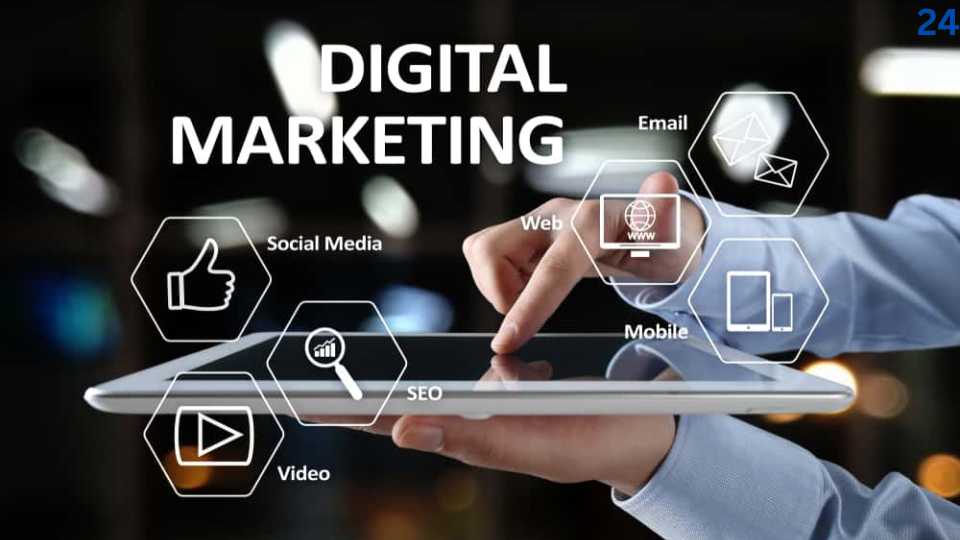
As of November 11, 2024, digital marketing continues to be an essential part of any business strategy. Companies across all industries rely on digital marketing to reach their target audiences, build brand awareness, and drive sales.
Some giants dominate the space, but which company holds the title of No. 1 in digital marketing? In this article, we explore the top digital marketing companies and explain why Google, a leader in the industry, stands out.
What is Digital Marketing?
Digital marketing refers to the use of online channels, such as search engines, social media, email, and websites, to promote products or services. The goal is to connect with potential customers digitally and create meaningful interactions that lead to conversions and brand loyalty.
Why is Digital Marketing Important?
Digital marketing is crucial because it allows businesses to reach their audiences wherever they are online. With more people using the internet daily, companies can use digital marketing to build visibility, engage customers, and increase sales in ways that traditional marketing methods cannot.
Criteria for Ranking Digital Marketing Companies
Several factors determine a digital marketing company’s success and rank in the industry. Key metrics include revenue, client satisfaction, product innovation, adaptability, and influence. Companies that continuously innovate and adapt to new technologies tend to stay at the top of the list.
Top Digital Marketing Companies in 2024
Here’s a look at some of the most influential digital marketing companies today.
1. Google (Alphabet Inc.)
Google is a powerhouse in digital marketing, with products like Google Ads, YouTube Ads, and advanced SEO tools. The company has mastered search advertising, allowing businesses to reach targeted audiences based on search intent. Google’s platform is unmatched in terms of global reach, making it a crucial tool for advertisers worldwide.
2. Meta (Facebook)
Meta, the parent company of Facebook, Instagram, and WhatsApp, plays a significant role in social media advertising. It offers powerful targeting options that allow businesses to reach audiences based on their interests, behaviors, and demographics. This makes Meta an essential platform for businesses looking to build social media presence and connect with customers.
3. Amazon
Amazon’s advertising network has grown significantly in recent years. With millions of users visiting the platform daily, Amazon provides advertisers access to a large and engaged audience. It’s an ideal platform for brands aiming to reach consumers during their buying journey.
4. Adobe
Adobe’s suite of products, especially Adobe Experience Cloud, is widely used in the marketing industry. Adobe’s tools support digital marketers in creating, managing, and measuring online experiences. Its services are popular among content creators and companies looking to enhance their customer experiences.
5. HubSpot
HubSpot is well-known for its all-in-one inbound marketing platform, which includes tools for content management, social media marketing, email campaigns, and analytics. It’s especially popular among small and medium-sized businesses that want an affordable and effective way to engage customers.
Other Notable Mentions
While Google, Meta, Amazon, Adobe, and HubSpot are leaders, other companies like Salesforce, IBM, and LinkedIn also contribute significantly to digital marketing. Each offers unique tools and platforms that support businesses in various ways.
Why Google is Considered No. 1
Google’s reach and influence are unmatched. It controls a massive share of the search market, and its advertising solutions are highly effective in connecting businesses with customers. Additionally, Google’s continuous innovation keeps it at the forefront of digital marketing, making it the top choice for many businesses worldwide.
Innovation in Google’s Digital Marketing Strategy
Google’s use of AI and machine learning has revolutionized digital advertising. With tools like automated bidding, responsive search ads, and data-driven attribution, Google ensures businesses get the best results from their campaigns. These innovations make Google’s advertising solutions more efficient and effective.
Challenges Faced by Google and Other Companies
Despite its success, Google faces challenges like increasing competition from other tech giants and privacy concerns. Data privacy regulations are changing how companies handle user data, which impacts the advertising industry. Companies are continuously adapting to these challenges to maintain trust and effectiveness.
Conclusion
Google stands as the No. 1 digital marketing company due to its unmatched reach, innovation, and influence in the industry. As the digital landscape evolves, Google and other leading companies will continue to shape the future of digital marketing.
FAQs
What is digital marketing?
Digital marketing is the promotion of products or services through online platforms to reach and engage customers.
Which company is best for small business digital marketing?
HubSpot and Google are popular choices for small businesses due to their affordable tools and extensive resources.
How does Google lead in digital marketing?
Google leads with its extensive reach, innovative products like Google Ads, and advanced technology, including AI.
Why is digital marketing important in 2024?
Digital marketing remains important because it allows businesses to engage audiences online, where people spend a lot of their time.
Who are the emerging players in digital marketing?
Companies like TikTok and LinkedIn are gaining popularity as effective platforms for digital advertising.
Thank you 24,

